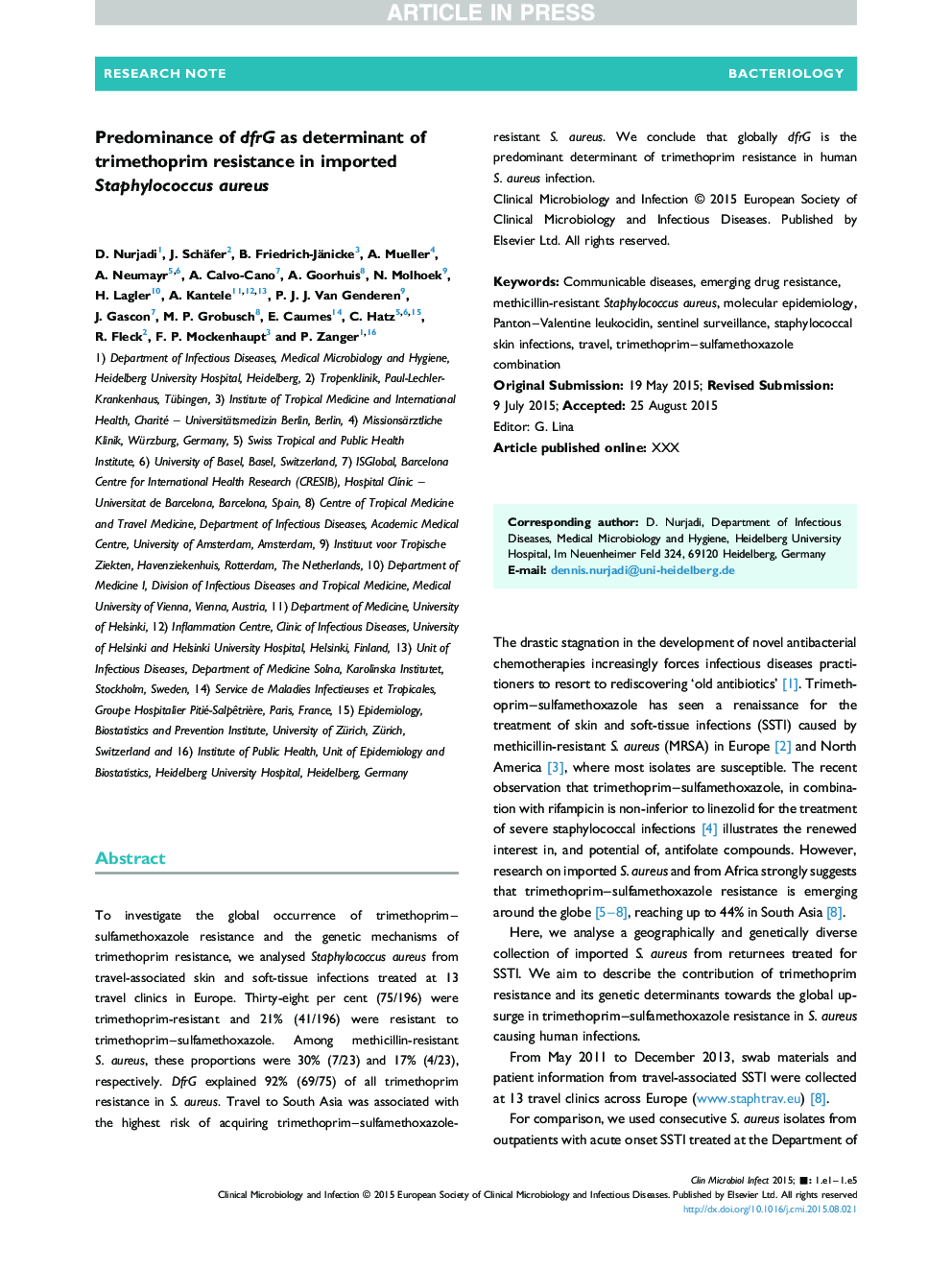| Article ID | Journal | Published Year | Pages | File Type |
|---|---|---|---|---|
| 6129416 | Clinical Microbiology and Infection | 2015 | 5 Pages |
Abstract
To investigate the global occurrence of trimethoprim-sulfamethoxazole resistance and the genetic mechanisms of trimethoprim resistance, we analysed Staphylococcus aureus from travel-associated skin and soft-tissue infections treated at 13 travel clinics in Europe. Thirty-eight per cent (75/196) were trimethoprim-resistant and 21% (41/196) were resistant to trimethoprim-sulfamethoxazole. Among methicillin-resistant S. aureus, these proportions were 30% (7/23) and 17% (4/23), respectively. DfrG explained 92% (69/75) of all trimethoprim resistance in S. aureus. Travel to South Asia was associated with the highest risk of acquiring trimethoprim-sulfamethoxazole-resistant S. aureus. We conclude that globally dfrG is the predominant determinant of trimethoprim resistance in human S. aureus infection.
Keywords
Related Topics
Life Sciences
Immunology and Microbiology
Microbiology
Authors
D. Nurjadi, J. Schäfer, B. Friedrich-Jänicke, A. Mueller, A. Neumayr, A. Calvo-Cano, A. Goorhuis, N. Molhoek, H. Lagler, A. Kantele, P.J.J. Van Genderen, J. Gascon, M.P. Grobusch, E. Caumes, C. Hatz, R. Fleck, F.P. Mockenhaupt, P. Zanger,
